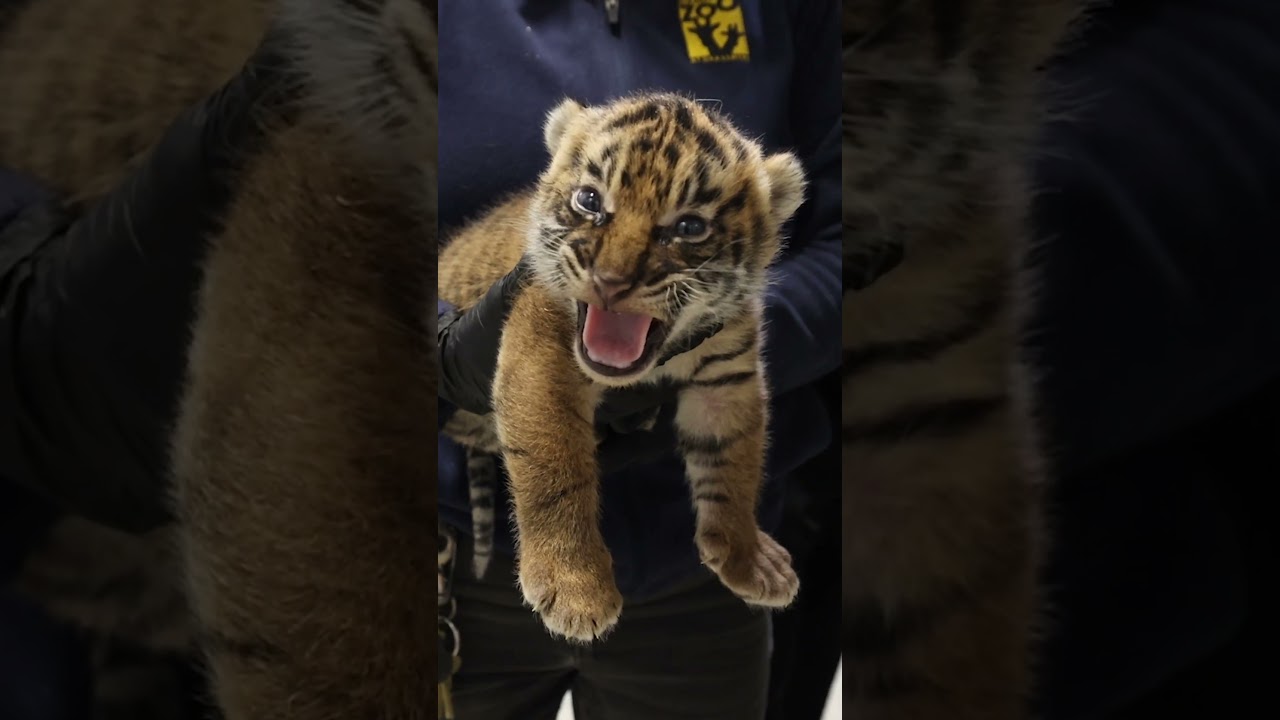- Physical characteristics and behavior of Spicy Sumatran tiger cubs
- Habitat and diet specifics of Sumatran tigers
- The breeding and cub-rearing practices in zoos
- Conservation strategies and challenges facing the Sumatran tiger
- Role of public awareness and education in tiger conservation
Sumatran tiger cubs, particularly the distinctively named Spicy Sumatran tiger cubs, are fascinating subjects of study. The Sumatran tiger (Panthera tigris sumatrae) is a critically endangered tiger subspecies found exclusively on the island of Sumatra in Indonesia. Understanding these cubs requires a deep dive into their physical characteristics, behavior, habitat, diet, breeding practices in captivity, and conservation efforts.
Physical Characteristics and Behavior
Sumatran tiger cubs are born with their eyes closed and weigh between 2-3 pounds. Their eyes open within a week to ten days. Initially blind and helpless, these cubs rely entirely on their mother for warmth, security, and nourishment. One of the distinctive features of the Sumatran tiger is its darker fur with narrower black stripes compared to other tiger subspecies. This camouflage adapts them well to their dense forest habitat.
As they grow, Sumatran cubs exhibit playful behavior that helps them develop essential hunting skills. Play includes stalking, pouncing, and mimicking kills on their siblings, which is crucial for their development into swift and powerful hunters. By six months, these behaviors are refined, preparing them for eventual independence. By the time they reach one year, they are almost self-sufficient, though most stay with their mothers for up to 18 months to learn survival intricacies.
Habitat and Diet of Sumatran Tigers
Sumatran tigers are uniquely adapted to the dense tropical rainforests of Sumatra, which feature thick foliage and varied terrain. This environment requires a high level of agility and stealth for hunting. Their diet predominantly includes deer (such as muntjac and sambar), wild boar, and, occasionally, smaller animals like birds and fish. While they are solitary hunters, their keen sight and hearing make them adept apex predators.
Summers and rainfalls influence their hunting patterns. Tigers hunt primarily at dawn and dusk, utilizing their striped camouflage to silently approach prey. The presence of water sources is critical, as they need it for drinking and cooling off, particularly during the hot seasons.
Breeding and Cub-rearing in Zoos
Zoos play a vital role in the conservation of Sumatran tigers through breeding programs designed to sustain and increase their population. These programs require careful planning to mimic natural breeding behaviors and provide a suitable environment for cubs. Breeding often involves the introduction of genetically diverse pairs to avoid inbreeding depression.
Once pregnant, a female Sumatran tiger exhibits nesting behavior, preparing a secluded area to birth and nurse her cubs. Post-birth, zoos provide a diet rich in calcium and vitamins for lactating females to maintain their health and milk production. Keeping disturbances to a minimum, zoo staff closely monitor the health and growth of cubs, ensuring they meet developmental milestones.
Veterinary intervention in zoos is essential, ensuring that cubs receive vaccinations and necessary medical treatments to prevent diseases that could devastate wild populations. Zoo environments also sometimes use behavioral enrichment to promote natural behaviors, such as using logs, pools, and climbing structures.
Conservation Strategies and Challenges
Despite breeding successes, conserving Sumatran tigers in the wild is fraught with challenges. Habitat loss due to illegal logging and agricultural expansion remains the most severe threat. These activities not only shrink the tigers’ territory but also decrease prey availability. Fragmented habitats make it difficult for tiger populations to breed healthily and sustain themselves.
Poaching, driven by the illegal wildlife trade, continues to threaten these tigers. Their bones and other body parts are often used in traditional medicines, exacerbating their decline. Conservation strategies involve enforcing anti-poaching laws, protecting habitats, and creating wildlife corridors to connect fragmented forests.
Organizations collaborate with local communities to promote sustainable agricultural practices and reduce human-tiger conflicts. Educating locals about the importance of tigers within the ecosystem and involving them in conservation efforts is crucial. Technology such as camera traps and GPS collars help track tiger movements, providing data crucial for effective conservation planning.
Public Awareness and Education
The role of public awareness and education in Sumatran tiger conservation cannot be overstated. Zoos and conservation organizations use educational programs to inform the public about the plight of the Sumatran tiger and the importance of biodiversity. Interactive exhibits, documentaries, and social media campaigns raise awareness and encourage public support and funding for conservation initiatives.
Educational outreach in schools and communities fosters a sense of stewardship in younger generations. Programs involving citizen scientists in projects like monitoring tiger populations or reporting illegal activities can supplement official conservation efforts. Engaging the global community through collaboration with international wildlife organizations brings more resources and attention to the Sumatran tiger’s conservation.
In summary, the study and conservation of Spicy Sumatran tiger cubs encompass various aspects ranging from their physical and behavioral traits to habitat requirements and breeding practices in captivity. Effective conservation strategies address the challenges faced by wild populations through combined efforts of law enforcement, habitat protection, and community engagement. Public awareness and education remain pivotal in fostering global support for these majestic creatures.
*****
Source Description
Throwback to a weigh-in of some spicy Sumatran tiger cubs! 🐯
In this video, they all weighed around 6 pounds. Bulan is just under 95 pounds now, while Kirana and Zara are around 86 pounds! 💪


